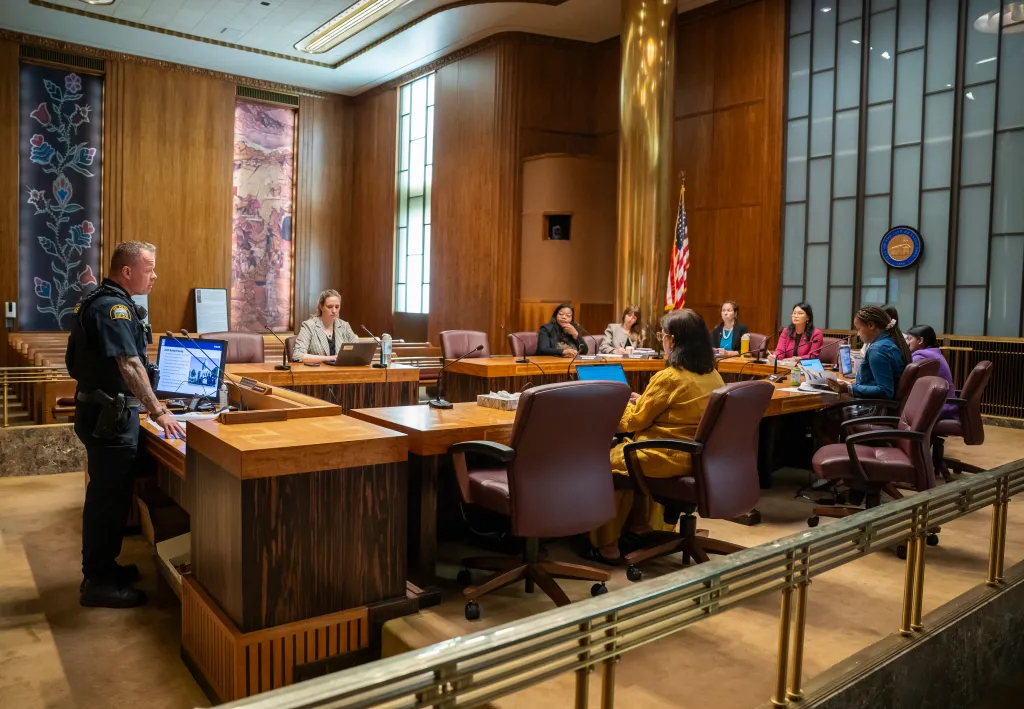
To place an obituary, please include the information from the obituary checklist below in an email to obits@pioneerpress.com. There is no option to place them through our website. Feel free to contact our obituary desk at 651-228-5263 with any questions.
General Information:
Your full name,
Address (City, State, Zip Code),
Phone number,
And an alternate phone number (if any)
Obituary Specification:
Name of Deceased,
Obituary Text,
A photo in a JPEG or PDF file is preferable, TIF and other files are accepted, we will contact you if there are any issues with the photo.
Ad Run dates
There is a discount for running more than one day, but this must be scheduled on the first run date to apply.
If a photo is used, it must be used for both days for the discount to apply, contact us for more information.
Policies:
Verification of Death:
In order to publish obituaries a name and phone number of funeral home/cremation society is required. We must contact the funeral home/cremation society handling the arrangements during their business hours to verify the death. If the body of the deceased has been donated to the University of Minnesota Anatomy Bequest Program, or a similar program, their phone number is required for verification.
Please allow enough time to contact them especially during their limited weekend hours.
A death certificate is also acceptable for this purpose but only one of these two options are necessary.
Guestbook and Outside Websites:
We are not allowed to reference other media sources with a guestbook or an obituary placed elsewhere when placing an obituary in print and online. We may place a website for a funeral home or a family email for contact instead; contact us with any questions regarding this matter.
Obituary Process:
Once your submission is completed, we will fax or email a proof for review prior to publication in the newspaper. This proof includes price and days the notice is scheduled to appear.
Please review the proof carefully. We must be notified of errors or changes before the notice appears in the Pioneer Press based on each day’s deadlines.
After publication, we will not be responsible for errors that may occur after final proofing.
Online:
Changes to an online obituary can be handled through the obituary desk. Call us with further questions.
Payment Procedure:
Pre-payment is required for all obituary notices prior to publication by the deadline specified below in our deadline schedule. Please call 651-228-5263 with your payment information after you have received the proof and approved its contents.
Credit Card: Payment accepted by phone only due to PCI (Payment Card Industry) regulations
EFT: Check by phone. Please provide your routing number and account number.
Cash: Accepted at our FRONT COUNTER Monday – Friday from 8:00AM – 3:30PM
Rates:
The minimum charge is $162 for the first 10 lines.
Every line after the first 10 is $12.20.
If the ad is under 10 lines it will be charged the minimum rate of $162.
On a second run date, the lines are $8.20 per line, starting w/ the first line.
For example: if first run date was 20 lines the cost would be $164.
Each photo published is $125 per day.
For example: 2 photos in the paper on 2 days would be 4 photo charges at $500.
Deadlines:
Please follow deadline times to ensure your obituary is published on the day requested.
Hours
Deadline (no exceptions)
Ad
Photos
MEMORIAM (NON-OBITUARY) REQUEST
Unlike an obituary, Memoriam submissions are remembrances of a loved one who has passed. The rates for a memoriam differ from obituaries.
Please call or email us for more memoriam information
Please call 651-228-5280 for more information.
HOURS: Monday – Friday 8:00AM – 5:00PM (CLOSED WEEKENDS and HOLIDAYS)
Please submit your memoriam ad to memoriams@pioneerpress.com or call 651-228-5280.
The St. Paul Police Department plans to keep 16 vacant jobs unfilled next year, with nearly half of them community engagement cadets, under the mayor’s proposed budget, the police chief told the City Council on Wednesday.
No current officers or other police department employees would lose their jobs.
Mayor Melvin Carter presented his 2026 budget proposal on Sept. 4. The City Council is now receiving weekly informational presentations from the city’s departments before it finalizes the budget in December.
Carter’s $887 million proposed budget for the coming year would rely on a 5.3% property tax levy increase, roughly comparable to this year’s 5.9% increase and about average for the decade.
The 2026 budget would expand investment in housing programs, such as office-to-housing conversions and down payment assistance, without laying off city employees. To accomplish those goals, Carter’s proposal would trim hours at some rec centers and freeze hiring for dozens of open city positions.
The police department’s proposed budget for next year is $146 million, which is about $3 million more than this year’s budget. Just over 92 percent of the budget is salaries and wages, and next year’s budget increase reflects already-negotiated salary increases in the contract with officers, Police Chief Axel Henry said.
Homicides, shootings are down
The department’s priorities are reducing gun violence and violent crime as a whole. “A lot of good news on that front,” Henry told the council Wednesday. “Every major felony crime category in the city is dropping, and it is dropping in consecutive years.”
There have been eight homicides in St. Paul this year, compared to 19 in the city at this time last year. Forty-nine people have been injured in nonfatal shootings, according to preliminary information; there were 77 as of this date last year.
The reduction in violent crime means the department has not needed to call in investigators and crime scene analysts as much on an overtime basis.
Police overtime spending from the general fund was down 30 percent for the first half of this year compared with the same period last year.
In downtown, the Dale/University area and other places — where some people are dealing and using drugs in public, contending with mental illness and involved in quality-of-life crimes — the police department has shifted officers’ hours and focus, Henry said.
“Obviously, the goal would be that we do something in prevention. No one wants to arrest our way out of the opioid crisis,” Henry said. “But we also know in the short term, one of the ways that we can compel people to seek … treatment … is to arrest them for the lower-level crimes that they’re committing, and then say, ‘Hey, you have a choice. You can face the consequences of that crime. Alternative number two, which is you go to drug court, and you basically go seek treatment.’”
Funding officers
Carter, in previously deciding how to use one-time federal funding for public safety, asked Henry if starting a nonfatal shooting unit could reduce such shootings and also push down homicides.
“I said, ‘Absolutely,’” Henry recounted Wednesday.
Nonfatal shootings were previously handled by homicide investigators. Designating investigators to solely solve nonfatal shootings led from a clearance rate of 38 percent at the end of 2023 to 71 percent for 2024 cases, according to the department.
The federal funding will run out at the end of 2026, “but they have been so effective” Henry told the council he would not “get rid of or disband that group.”
Meanwhile, due to a grant that’s expiring, 11 other officers who’d been grant funded will need to be funded by the department next year.
Down to 8 parking enforcement officers
Keeping 16 vacant positions open will save about $1.4 million next year, according to the department.
There are currently 17 community engagement cadets working for the police department. They’re young people who are in college, “on a pathway program to become police officers,” according to Henry.
The seven vacant cadet positions that will remain open next year is “not saying that I don’t value that position,” but comes down to making difficult budget decisions, Henry said.
Parking enforcement officers, who are in college for law enforcement and are a pipeline to becoming a St. Paul police officer, are a “way to illustrate some of the issues with our budget,” Henry said.
There is enough work for about 24 parking officers during two shifts, but the budget doesn’t allow for that many, Henry said. The police department had 12 at one point and, in the last year, the number was reduced to 10. Next year, there will be eight.
“We would like to see those (numbers) obviously stay up,” Henry said, but it’s understandable that they have to reduce them “when we’re doing budget crunches.”
Council Member Anika Bowie, whose ward includes Allianz Field, said she hears from people who live in the neighborhood and are frustrated about cars parked for a long time or in handicap parking spots.
“If we’re going to be a city that’s going to have more events, more concerts, more festivals … all those things that helps generate our economy … we want to make sure that the residents here aren’t compromised with having adequate parking,” she said.
‘Retirement boom’
The department is authorized to hire up to 619 officers, which will drop to 616 in next year’s proposed budget. But the department hasn’t had close to that number for some time because hiring hasn’t kept up with people leaving. There were 562 officers on the department’s payroll as of Sept. 8.
The police department brings on new officers through one or two training academies each year. There is not funding earmarked in next year’s budget for two academies.
“Having academies is critical to hiring those officers and then getting out of our shortage, which saves us on overtime, so we want to be investing there,” City Council President Rebecca Noecker said, asking Henry if the department will be able to hold two academies next year.
“We will find a way,” he said. “… We have people in the pipeline, and we are recruiting.”
Furthermore, law enforcement is “in the middle of a retirement boom” as people reach retirement age, Henry said. At the same time, fewer people have been applying to become officers.
Over the next three years, there will be 90 to 100 St. Paul officers who will turn 55 or older and could retire.
“Keep in mind, I’m 56 so people don’t automatically leave at 55, but for most folks, that’s typically when you get there, especially if you’re hired in your early 20s,” Henry said.



